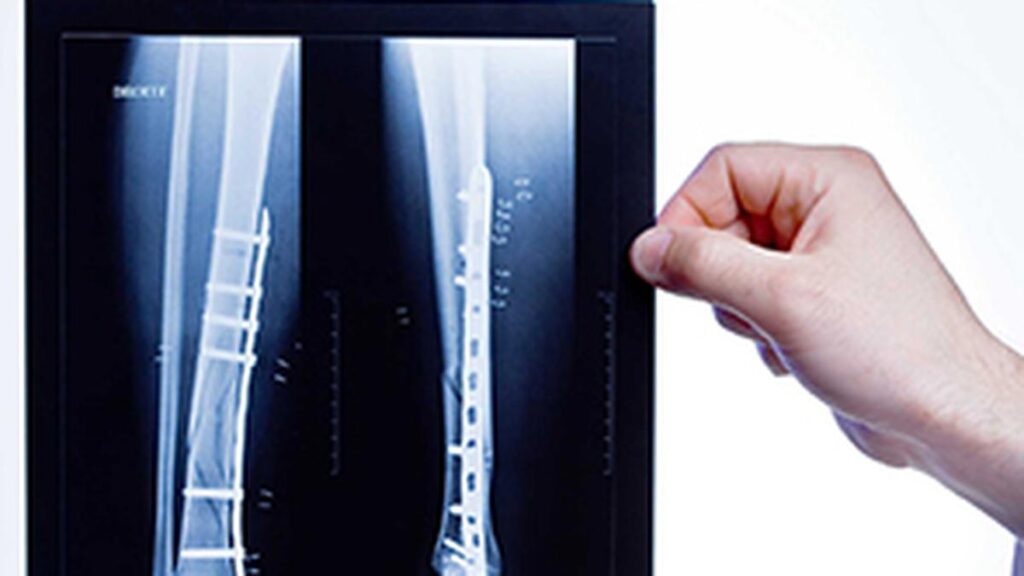
Photograph used for representational purposes only
| Photo Credit: Getty Images/iStockphoto
Three Indian paediatric rheumatologists have drawn up a plan of action to approach a child with joint pain, outlining key clinical and laboratory features of rheumatic disorders. Very often, diagnosis of rheumatic disorders – conditions that could affect multiple systems such as the joints, skin and kidneys – in children is delayed by months or even years. The longer a definitive diagnosis takes from the onset of symptoms, the higher the chances of disease-related organ damage in children. Delays in diagnosis stem from factors such as lack of awareness and misdiagnosis.
In an article published in Indian Paediatrics – ‘Sensing the Simmering Inflammation : Clues for Diagnosis of Underlying Rheumatic Disorder’ – Chandrika S. Bhat of Paediatric Rheumatology Services, Rainbow Children’s Hospital, Bengaluru, Athimalaipet V. Ramanan, Department of Paediatric Rheumatology, Bristol Royal Hospital for Children, U.K. and Narendra Kumar Bagri, Division of Paediatric Rheumatology, Department of Paediatrics, All India Institute of Medical Sciences, New Delhi have elaborated on the common clinical manifestations of rheumatic diseases, its diagnosis, sequelae of missed rheumatic diseases, along with a list of clinical features and laboratory features of common rheumatic disorders, to enable faster diagnosis.

Common rheumatic disorders
Juvenile Idiopathic Arthritis, Systemic Lupus Erythematosus, Vasculitis and Juvenile Dermatomyositis are some of the common rheumatic disorders. “Rheumatic disorders occur when the body’s own immune system, instead of protecting us, starts harming us. The exact cause for this aberration is not known, though an interaction of environmental, host factors and genetic predisposition is implicated,” Dr. Bagri, one of the authors, explains. Though rheumatic disorders occur in both adults and children, some conditions are more prominent in children – Kawasaki disease, a type of vasculitis, is one such disorder, he adds.
On one hand, delay in diagnosing rheumatic diseases could cause permanent joint disability and organ damage such as in vasculitis and lupus. “The organ damage depends on the type of underlying disease such as joint damage in juvenile idiopathic diseases, kidney damage in systemic lupus erythematosus and lung or heart damage in systemic sclerosis,” he says. On the other hand, misdiagnosis exposes children to inappropriate drugs and their accompanying side effects, he says.
Common symptoms of rheumatic disorders in children
Unexplained fever
Joint pain and swelling
Skin rash
Oral ulcers
Alopecia
Bluish discoloration of fingers on exposure to cold (Raynaud’s phenomenon)
Morning stiffness/gelling
Challenges in diagnosis
The authors note that diagnosing paediatric rheumatic diseases can be challenging, as they often mimic common conditions such as infections and, less commonly, malignancies. Characteristic pattern recognition guided by a detailed history and clinical examination, often helps in making the correct diagnosis. They go on to elaborate the common clinical manifestations of rheumatic diseases – common symptoms (such as prolonged or recurrent fever, musculoskeletal manifestations (such as arthritis-presence of joint swelling or effusion, increased warmth), dermatological features, renal manifestations, neurological manifestations, cardiopulmonary manifestations, ocular manifestations and haematological manifestations.
The article gives disease-specific clinical features and evaluation for common rheumatic disorders. They note that history and physical examinations are crucial for arriving at a diagnosis of paediatric rheumatic diseases. Laboratory tests and imaging studies such as plain radiographs, ultrasound scans and Magnetic Resonance Imaging (MRI) usually complement the clinical assessment and play a supportive role in most cases.

Need for early detection
The authors concluded that early detection is paramount as it significantly impacts outcomes, reduces the need for intensification of treatment strategies and can prevent progression of organ damage. Early diagnosis impacts the psychological state of children and adolescents, as they experience symptom relief and improved well-being, enhancing their overall quality of life.
Sensing the subtle symptoms or signs of inflammation and conducting a focussed clinical evaluation is essential to enable early diagnosis and subsequent early intervention, thereby improving outcomes in children, the article said.. “Though these are chronic disorders, timely diagnosis and effective treatment can play a crucial role,” Dr. Bagri notes.
Published – April 02, 2025 01:09 am IST

